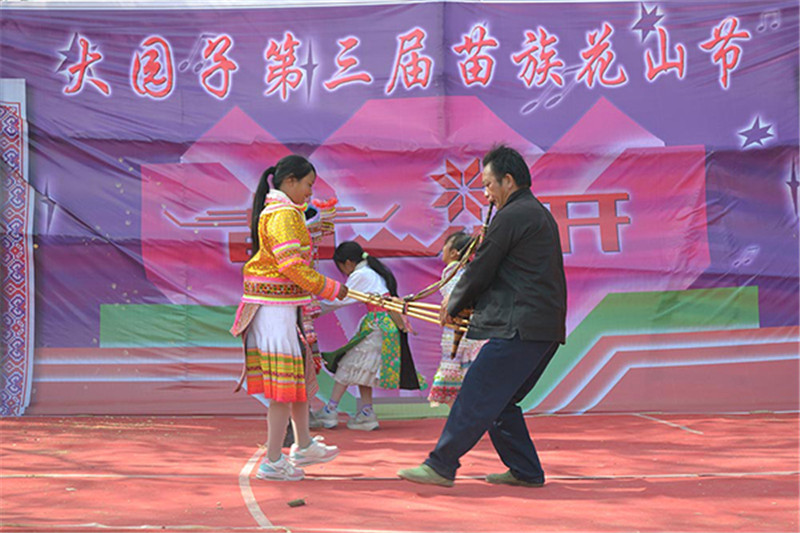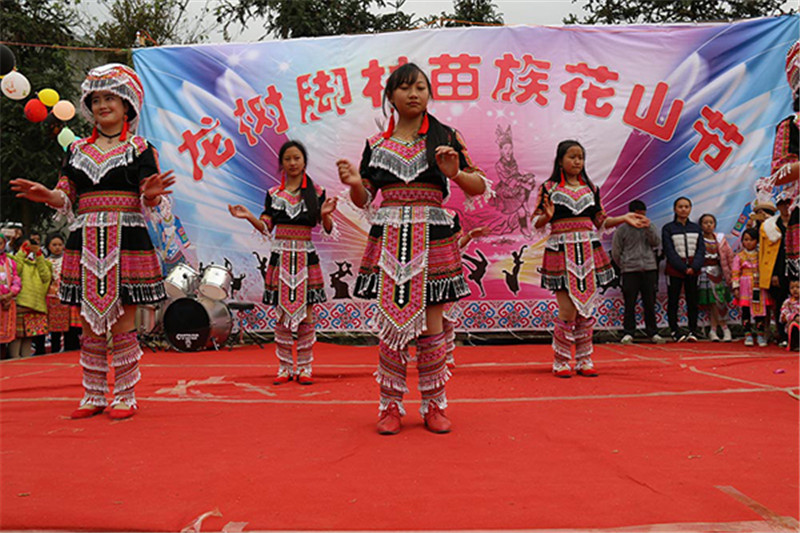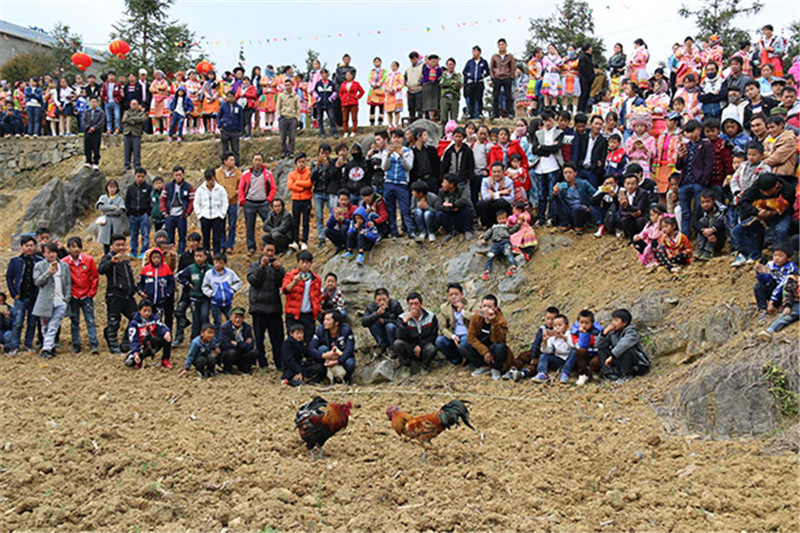 alt="Puer Surrounding Counties and Towns: Weekly & Special Local Markets Travel Guide"
/>
alt="Puer Surrounding Counties and Towns: Weekly & Special Local Markets Travel Guide"
/>
Huashan Festival of Miao Ethnic Minority in Malipo County, Wenshan
Overview
- Chinese Name:麻栗坡县苗族花山节
- English Name:Huashan Festival of Miao Ethnic Minority in Malipo County, Wenshan
- Location: Dayuanzi Village and Longshujiao Village of Donggan Town in Malipo County.
The Huashan Festival, celebrated by the Miao ethnic minority in Malipo County, Wenshan Zhuang and Miao Autonomous Prefecture of Yunnan Province, is a vibrant and significant cultural event that showcases the rich traditions and heritage of the Miao people. This festival is closely linked to agricultural practices and community bonding, often reflecting the values, beliefs, and artistic expressions of the Miao community.

Purpose
The Huashan Festival typically takes place annually, often coinciding with the spring season, and marks an important time for the Miao people to engage in various cultural and agricultural activities. The festival serves several key purposes:
- Cultural Celebration: It is an opportunity for the Miao people to celebrate their unique identity, traditions, and cultural practices through music, dance, and art.
- Agricultural Rituals: The festival is also associated with agricultural activities and rituals that honor the earth and the fertility of the land, acknowledging the essential role of agriculture in their lives.
- Community Gathering: The Huashan Festival fosters unity among the Miao community, bringing together families and friends to celebrate, share, and strengthen communal bonds.

Local Activities
- Traditional Performances:
- The festival features colorful performances, including folk songs and dances that are integral to Miao culture. Spectacular traditional costumes, often adorned with intricate embroidery and silver jewelry, are worn during these performances.
- Culinary Celebrations:
- Local delicacies are prepared and shared during the festival, offering an opportunity for community members and visitors to savor Miao cuisine. Traditional dishes may include rice, meat, and locally sourced vegetables.
- Artisan Displays:
- The festival showcases the craftsmanship of the Miao people, with artisans displaying handmade goods such as embroidery, silverware, and other traditional crafts, allowing visitors to appreciate and purchase these unique creations.
- Agricultural Blessings:
- Rituals and ceremonies are conducted to bless the crops, invoke good fortune, and pray for a fruitful harvest. These rituals are often characterized by prayers, offerings, and traditional practices that reflect the Miao people’s connection to the land.
- Sports and Competitions:
- Various traditional games and competitions may take place during the festival. These activities foster friendly rivalry and community engagement, allowing participants to showcase their skills.
- Cultural Exchanges:
- The Huashan Festival may attract visitors from other regions and ethnic groups, promoting cultural exchange and understanding among different communities.

Significance
- Cultural Preservation: The festival plays a vital role in preserving Miao cultural traditions, language, and practices, passing them on to younger generations.
- Economic Opportunities: The Huashan Festival can boost local tourism and provide economic benefits to the community by attracting visitors who engage with local vendors, artisans, and cultural experiences.
- Strengthening Community Ties: By gathering families and friends to celebrate together, the festival reinforces social bonds and communal identity among the Miao people.
- Spiritual Connection: The agricultural rituals during the festival highlight the Miao people’s spiritual connection to nature, emphasizing their respect for the environment and agricultural practices.
In summary, the Huashan Festival in Malipo County is an essential cultural event for the Miao ethnic minority, celebrating their heritage through various performances, activities, and rituals that honor their traditions and promote community unity. It serves as a vibrant display of Miao culture and a significant occasion for agricultural and social festivities.

 7 Days GolfingTour
7 Days GolfingTour
 8 Days Group Tour
8 Days Group Tour
 8 Days Yunnan Tour
8 Days Yunnan Tour
 7 Days Shangri La Hiking
7 Days Shangri La Hiking
 11 Days Yunnan Tour
11 Days Yunnan Tour
 6 Days Yuanyang Terraces
6 Days Yuanyang Terraces
 11 Days Yunnan Tour
11 Days Yunnan Tour
 8 Days South Yunnan
8 Days South Yunnan
 7 Days Tea Tour
7 Days Tea Tour
 8 Days Muslim Tour
8 Days Muslim Tour
 12 Days Self-Driving
12 Days Self-Driving
 4 Days Haba Climbing
4 Days Haba Climbing
 Tiger Leaping Gorge
Tiger Leaping Gorge
 Stone Forest
Stone Forest
 Yunnan-Tibet
Yunnan-Tibet
 Hani Rice Terraces
Hani Rice Terraces
 Kunming
Kunming
 Lijiang
Lijiang
 Shangri-la
Shangri-la
 Dali
Dali
 XishuangBanna
XishuangBanna
 Honghe
Honghe
 Kunming
Kunming
 Lijiang
Lijiang
 Shangri-la
Shangri-la
 Yuanyang Rice Terraces
Yuanyang Rice Terraces
 Nujiang
Nujiang
 XishuangBanna
XishuangBanna
 Spring City Golf
Spring City Golf
 Snow Mountain Golf
Snow Mountain Golf
 Stone Mountain Golf
Stone Mountain Golf












 What Our Customers Say?
What Our Customers Say?
